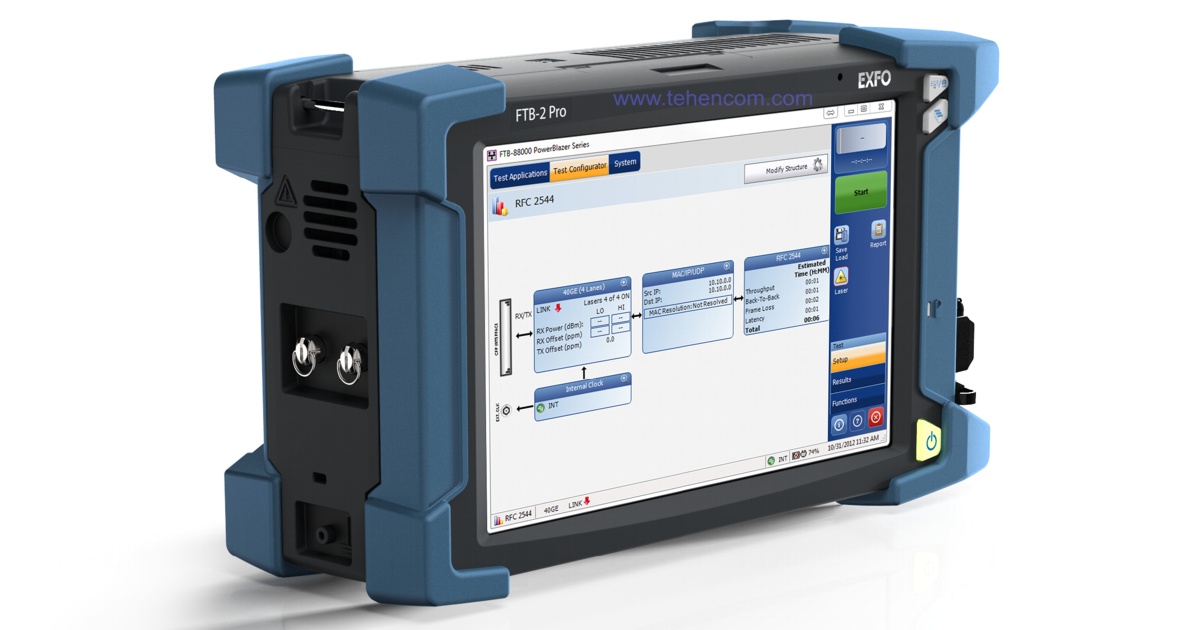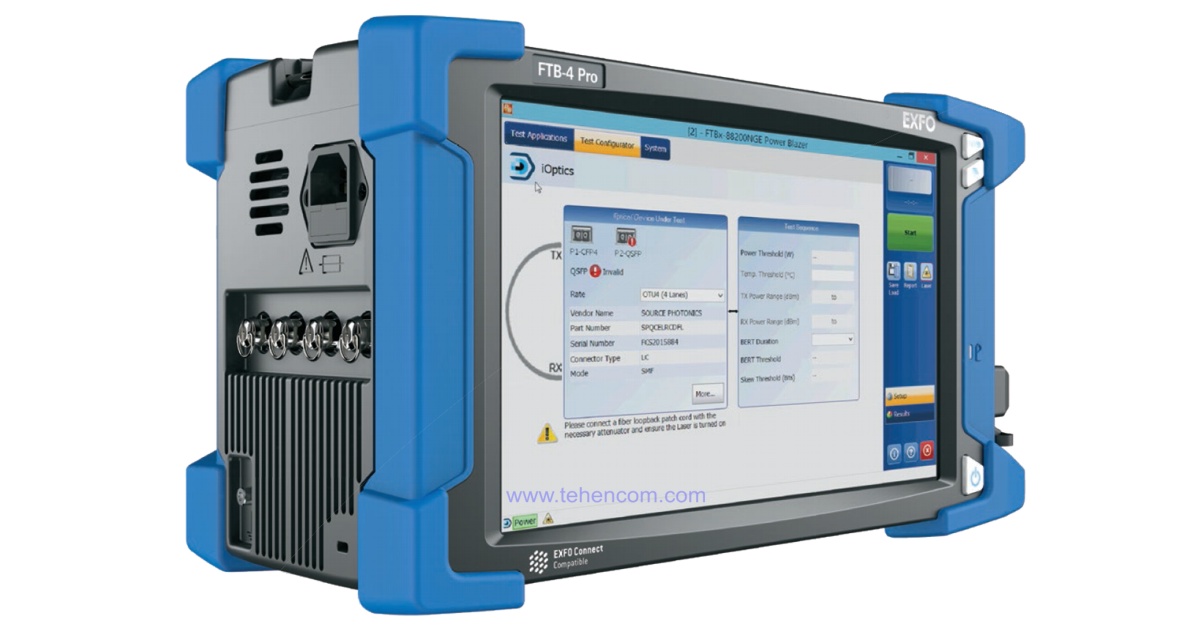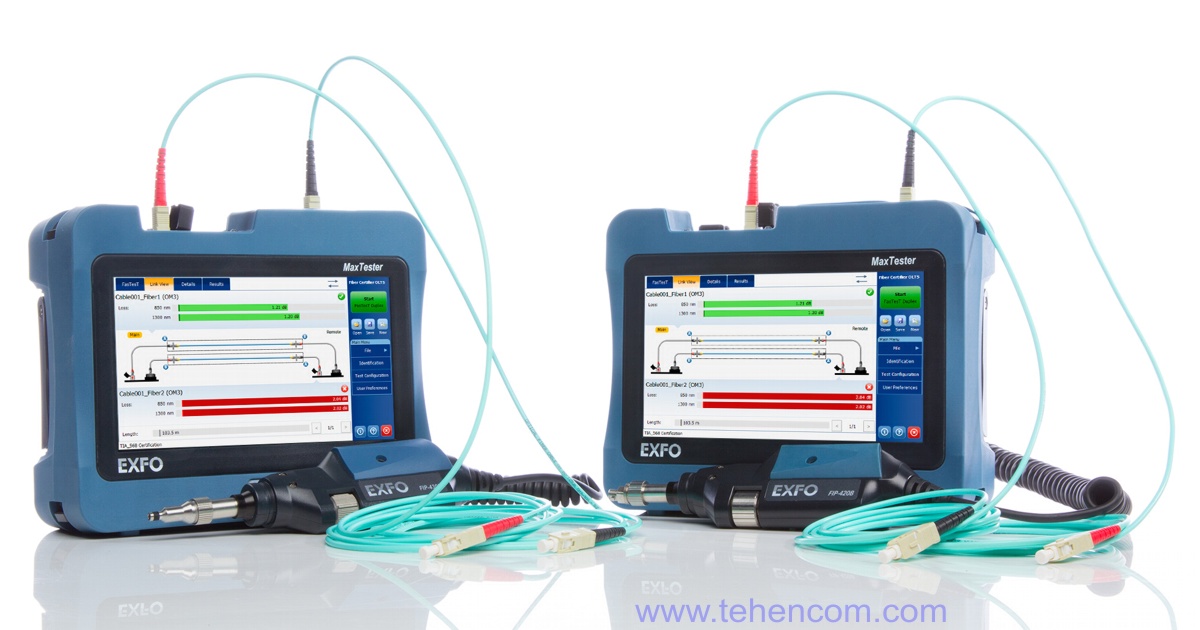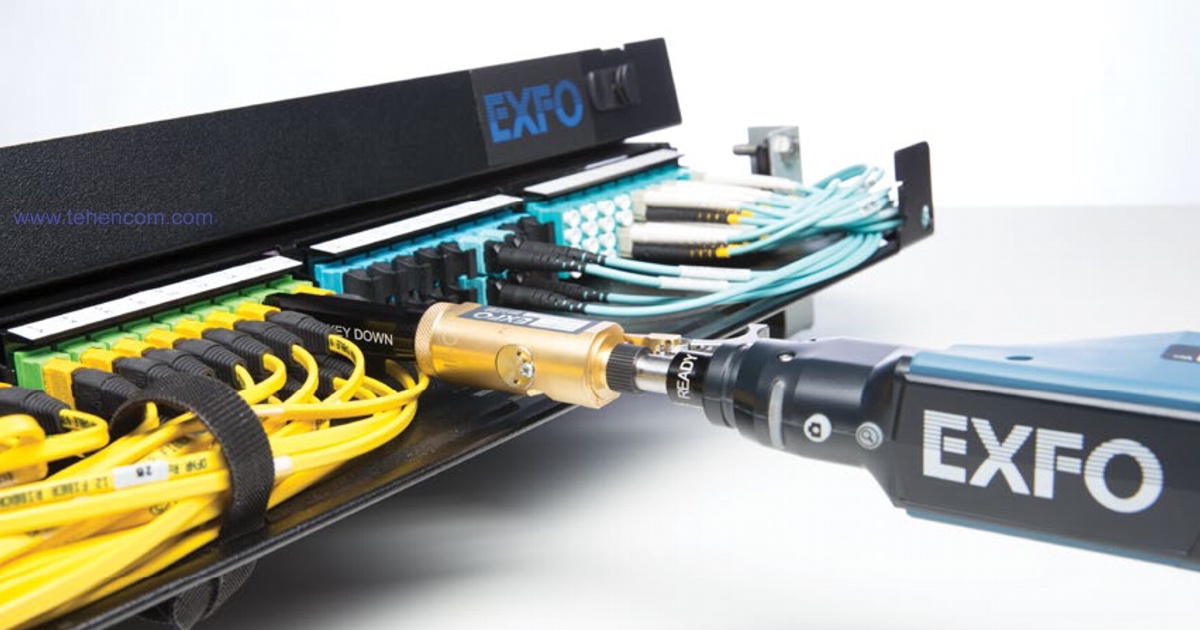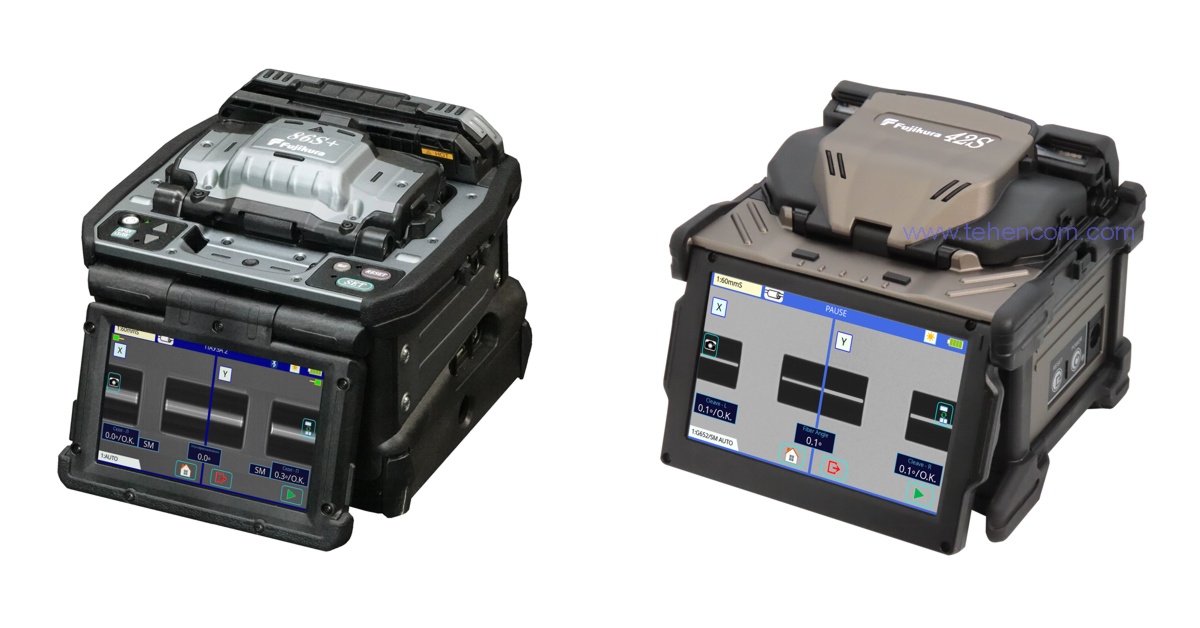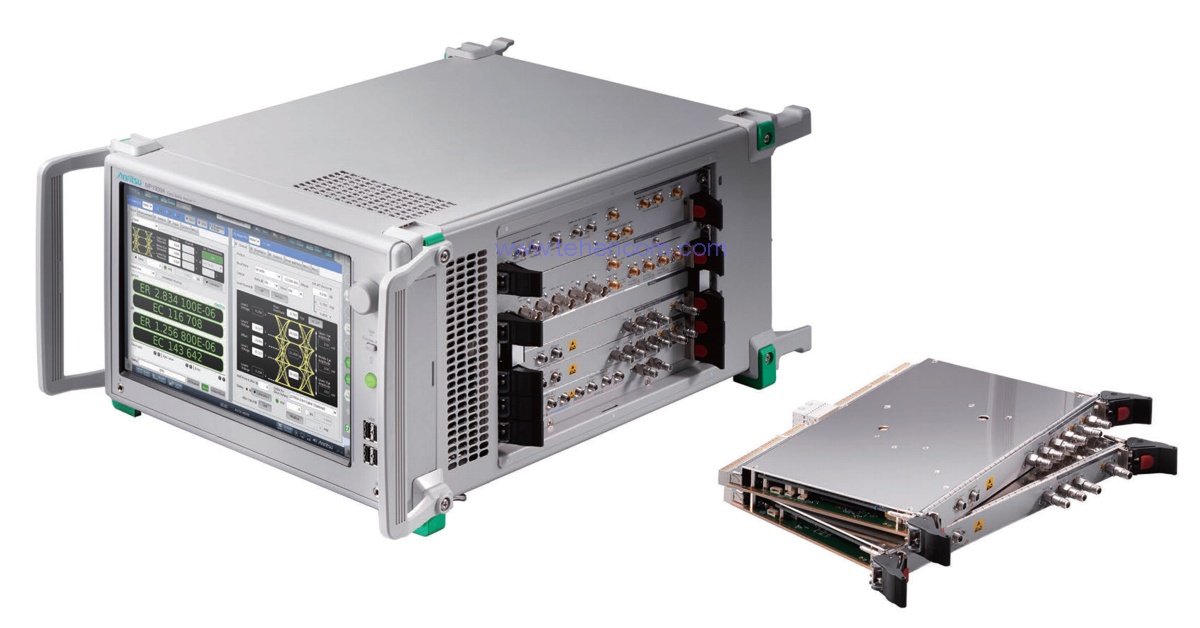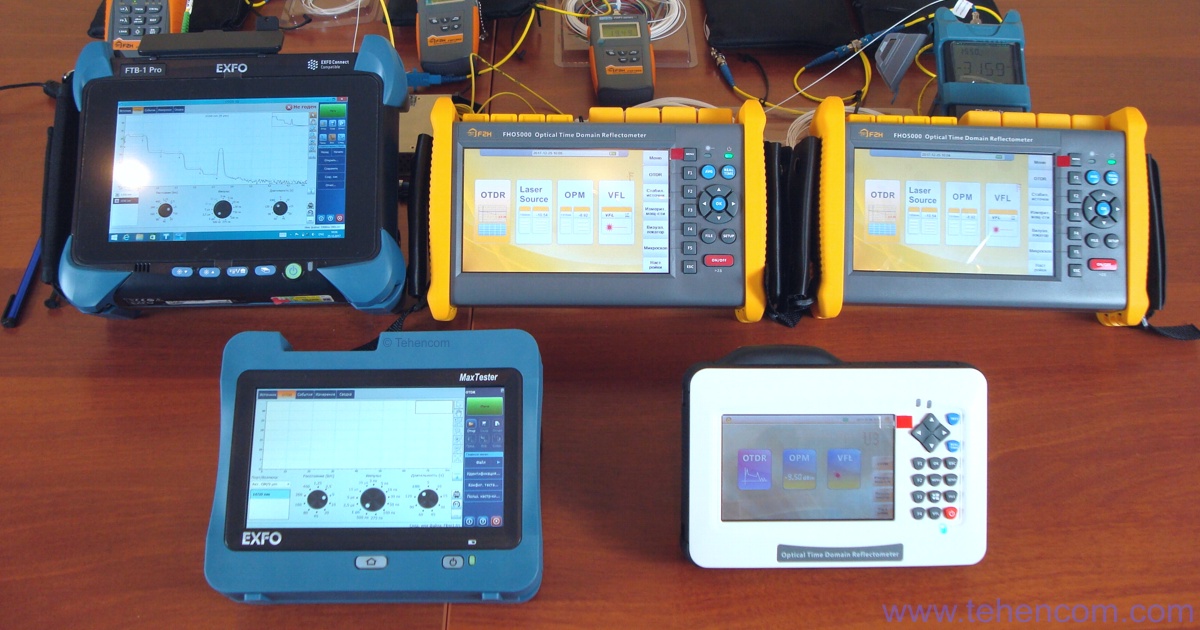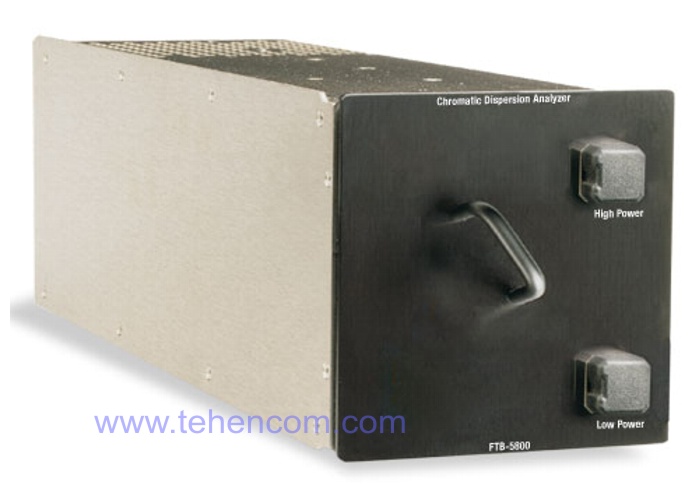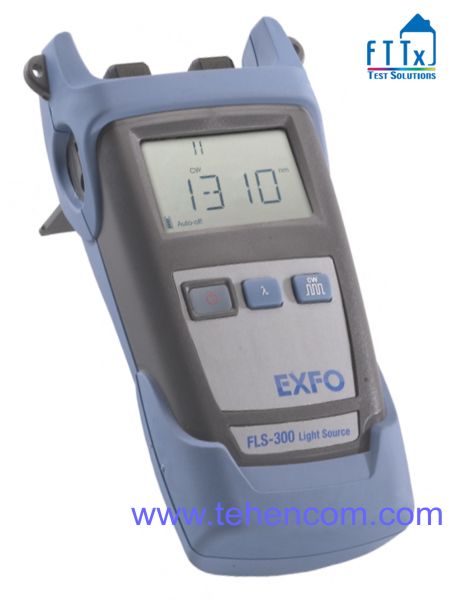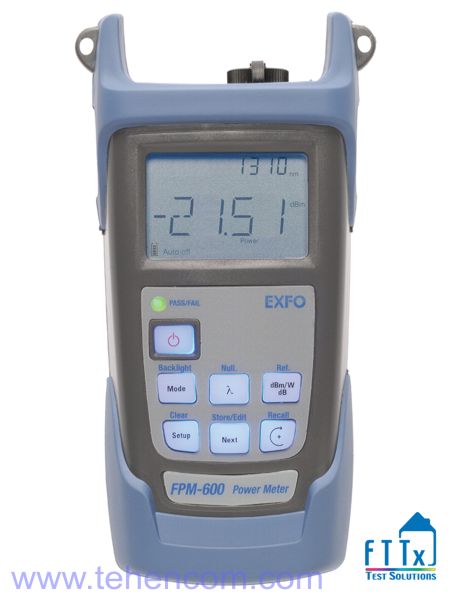Optical time domain reflectometers
-
PromotionTop sales
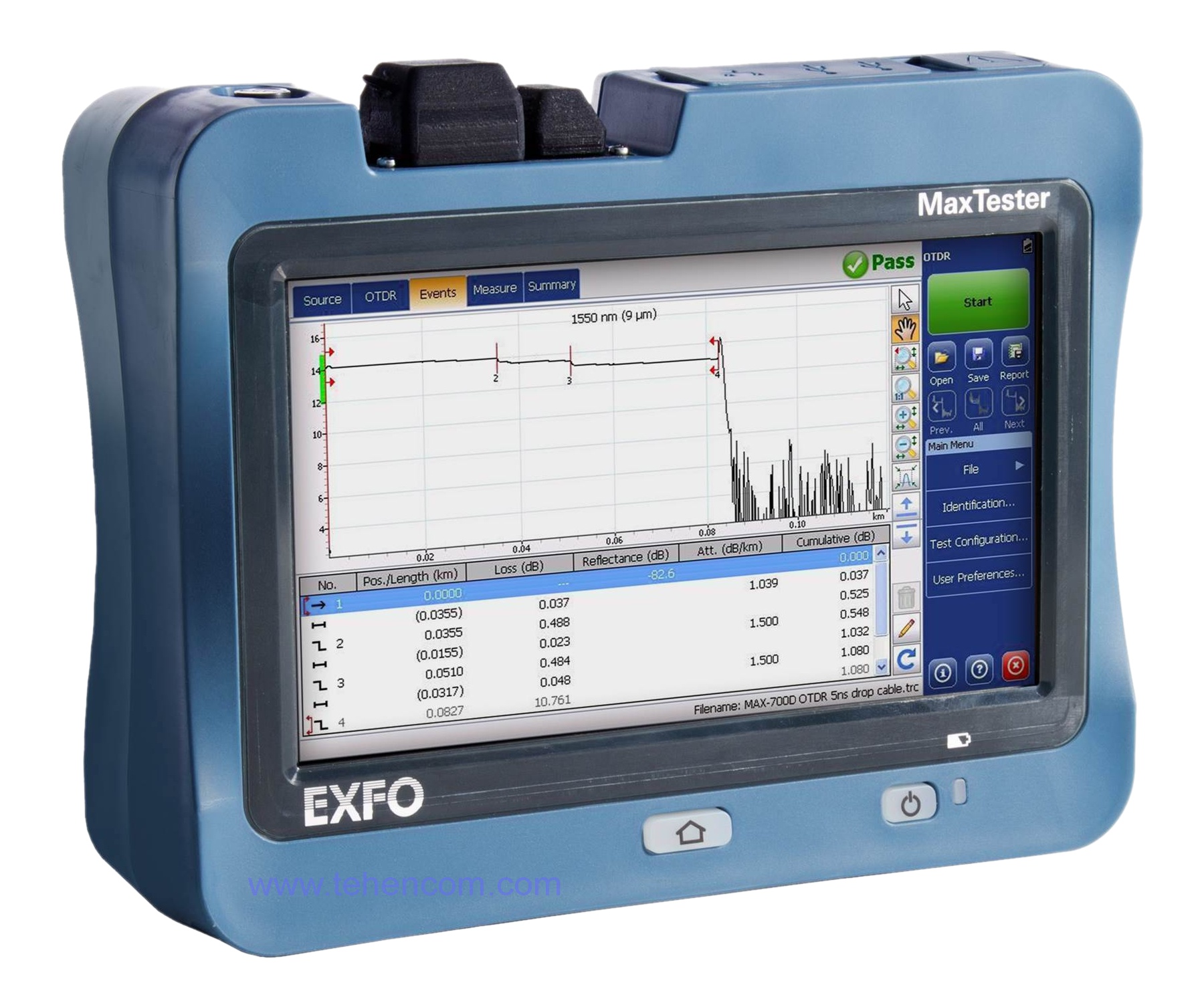 EXFO MAX-715D-SM1
EXFO MAX-715D-SM1Optical time domain reflectometer, 32 dB, 1310 nm, 1550 nm
From 204 215 UAH
–5%
From 194 004 UAH
On order
Product code: 2030001
Event dead zone SM: 0.9 m
Distance range SM: 0.1 – 200 km
-
PromotionTop sales
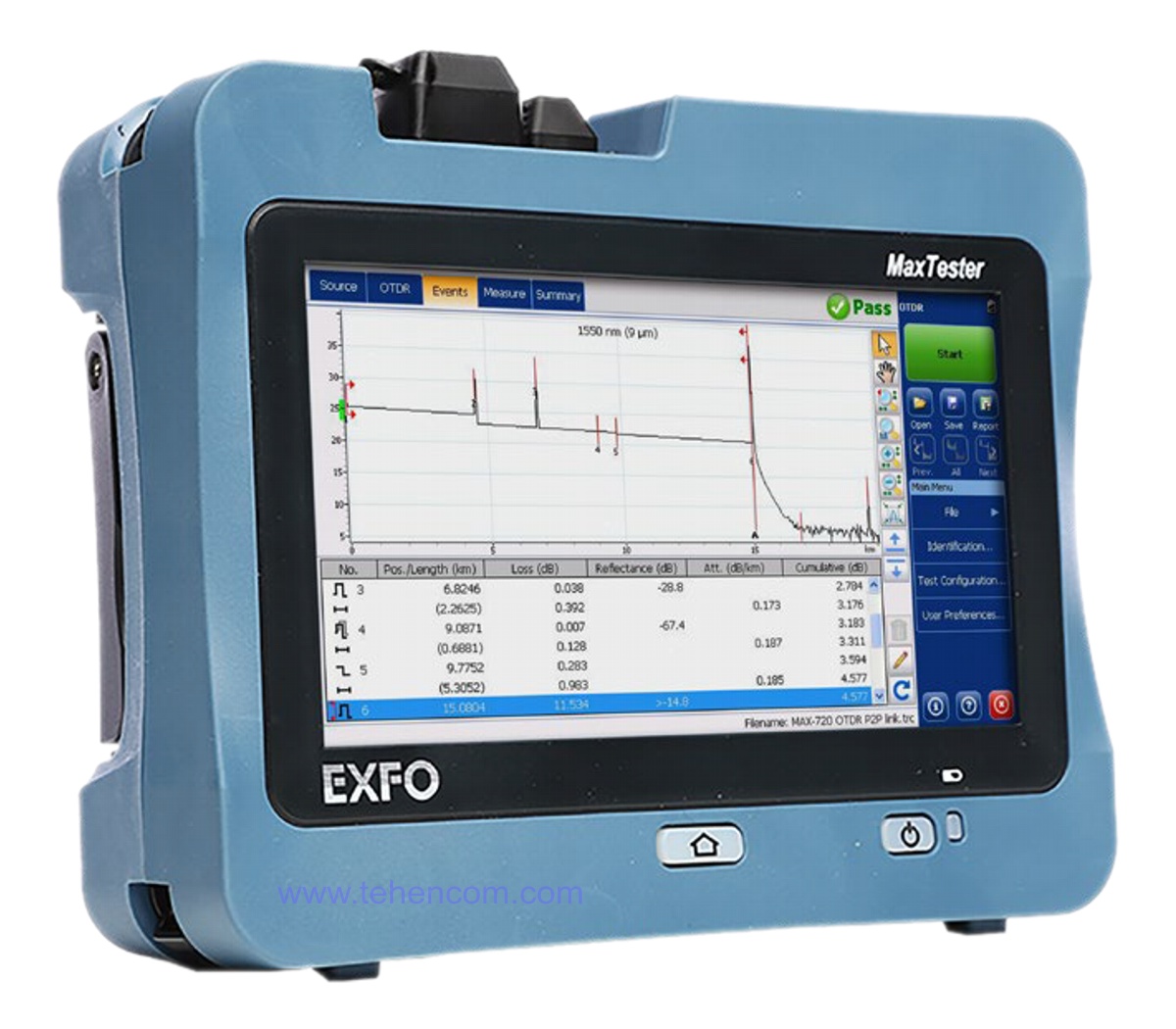 EXFO MAX-720D-SM1
EXFO MAX-720D-SM1Optical time domain reflectometer, 36 dB, 1310 nm, 1550 nm
From 253 093 UAH
–5%
From 240 438 UAH
On order
Product code: 2030003
Event dead zone SM: 0.7 m
Distance range SM: 0.1 – 260 km
-
PromotionExpert's choice
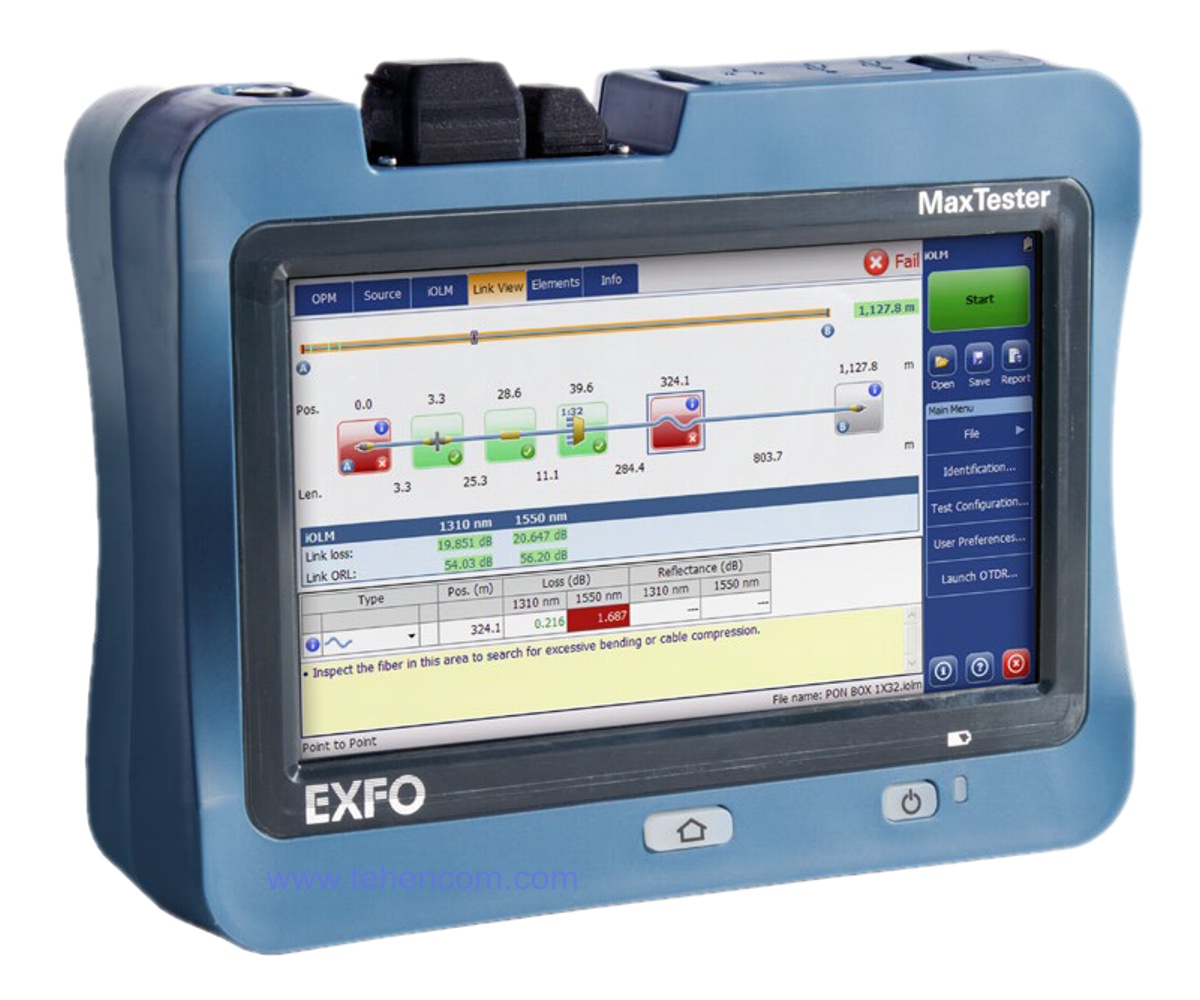 EXFO MAX-730D-SM8
EXFO MAX-730D-SM8Optical time domain reflectometer, 39 dB, 1310 nm, 1550 nm + 39 dB, 1650 nm (live)
From 448 592 UAH
–5%
From 426 162 UAH
On order
Product code: 2030009
Event dead zone SM: 0.5 m
Distance range SM: 0.1 – 400 km
-
NoveltyExpert's choice
 EXFO AXS-130-SM8
EXFO AXS-130-SM8Optical time domain reflectometer, 42 dB, 1310 nm, 1550 nm + 39 dB, 1650 nm (live)
From 380 376 UAH
On order
Product code: 2030016
Event dead zone SM: 0.5 m
Distance range SM: 0.65 – 200 km
-
NoveltyTop sales
 EXFO AXS-120-SM1
EXFO AXS-120-SM1Optical time domain reflectometer, 35 dB, 1310 nm, 1550 nm
From 201 876 UAH
On order
Product code: 2030013
Event dead zone SM: 0.8 m
Distance range SM: 0.65 – 200 km
-
Expert's choice
 EXFO MAX-720D-Q2-QUAD
EXFO MAX-720D-Q2-QUADOptical time domain reflectometer, 36 dB, 1310 nm, 1550 nm + 29 dB, 850 nm, 1300 nm
From 448 590 UAH
On order
Product code: 2030005
Event dead zone SM: 0.7 m
Distance range SM: 0.1 – 260 km
Event dead zone MM: 0.7 m
Distance range MM: 0.1 – 40 km
-
 EXFO FTBx-740C-CW10
EXFO FTBx-740C-CW10Optical time domain reflectometer module for CWDM, 37 dB, 1430 nm – 1610 nm
From 635 376 UAH
On order
Product code: 2030028
Event dead zone SM: 1.1 m
Distance range SM: 0.1 – 400 km
-
 Anritsu MT9085C-053
Anritsu MT9085C-053Optical time domain reflectometer, 46 dB, 1310 nm, 1550 nm
From 638 850 UAH
On order
Product code: 2030026
Event dead zone SM: 0.8 m
Distance range SM: 0.5 – 300 km
-
 Anritsu MT9085B-063
Anritsu MT9085B-063Optical time domain reflectometer, 42 dB, 1310 nm, 1550 nm + 29 dB, 850 nm, 1300 nm
From 729 978 UAH
On order
Product code: 2030025
Event dead zone SM: 0.8 m
Distance range SM: 0.5 – 300 km
Event dead zone MM: 0.8 m
Distance range MM: 0.5 – 100 km
-
 Anritsu MT9085B-057
Anritsu MT9085B-057Optical time domain reflectometer, 40 dB, 1310 nm, 1550 nm, 1625 nm
From 699 588 UAH
On order
Product code: 2030023
Event dead zone SM: 0.8 m
Distance range SM: 0.5 – 300 km
-
 Anritsu MT9085B-053
Anritsu MT9085B-053Optical time domain reflectometer, 42 dB, 1310 nm, 1550 nm
From 486 684 UAH
On order
Product code: 2030020
Event dead zone SM: 0.8 m
Distance range SM: 0.5 – 300 km
-
 Anritsu MT9085A-063
Anritsu MT9085A-063Optical time domain reflectometer, 39 dB, 1310 nm, 1550 nm + 29 dB, 850 nm, 1300 nm
From 669 192 UAH
On order
Product code: 2030019
Event dead zone SM: 0.8 m
Distance range SM: 0.5 – 300 km
Event dead zone MM: 0.8 m
Distance range MM: 0.5 – 100 km
-
 Anritsu MT9085A-057
Anritsu MT9085A-057Optical time domain reflectometer, 37 dB, 1310 nm, 1550 nm, 1625 nm
From 577 914 UAH
On order
Product code: 2030018
Event dead zone SM: 0.8 m
Distance range SM: 0.5 – 300 km
-
 Anritsu MT9085A-053
Anritsu MT9085A-053Optical time domain reflectometer, 39 dB, 1310 nm, 1550 nm
From 425 850 UAH
On order
Product code: 2030017
Event dead zone SM: 0.8 m
Distance range SM: 0.5 – 300 km
-
Novelty
 EXFO AXS-130-SM7
EXFO AXS-130-SM7Optical time domain reflectometer, 39 dB, 1650 nm (live)
From 337 878 UAH
On order
Product code: 2030015
Event dead zone SM: 0.5 m
Distance range SM: 0.65 – 200 km
-
Novelty
 EXFO AXS-130-SM1
EXFO AXS-130-SM1Optical time domain reflectometer, 42 dB, 1310 nm, 1550 nm
From 295 380 UAH
On order
Product code: 2030014
Event dead zone SM: 0.5 m
Distance range SM: 0.65 – 200 km
-
 EXFO MAX-715D-SM8
EXFO MAX-715D-SM8Optical time domain reflectometer, 32 dB, 1310 nm, 1550 nm + 30 dB, 1650 nm (live)
From 341 280 UAH
On order
Product code: 2030002
Event dead zone SM: 0.9 m
Distance range SM: 0.1 – 200 km
-
 EXFO MAX-720D-SM8
EXFO MAX-720D-SM8Optical time domain reflectometer, 36 dB, 1310 nm, 1550 nm + 35 dB, 1650 nm (live)
From 365 502 UAH
On order
Product code: 2030004
Event dead zone SM: 0.7 m
Distance range SM: 0.1 – 260 km
-
 EXFO MAX-730D-SM1
EXFO MAX-730D-SM1Optical time domain reflectometer, 39 dB, 1310 nm, 1550 nm
From 350 838 UAH
On order
Product code: 2030006
Event dead zone SM: 0.5 m
Distance range SM: 0.1 – 400 km
-
 EXFO MAX-730D-SM3
EXFO MAX-730D-SM3Optical time domain reflectometer, 39 dB, 1310 nm, 1550 nm, 1625 nm
From 443 916 UAH
On order
Product code: 2030007
Event dead zone SM: 0.5 m
Distance range SM: 0.1 – 400 km
-
 EXFO MAX-730D-SM7
EXFO MAX-730D-SM7Optical time domain reflectometer, 39 dB, 1650 nm (live)
From 399 714 UAH
On order
Product code: 2030008
Event dead zone SM: 0.5 m
Distance range SM: 0.1 – 400 km
-
Novelty
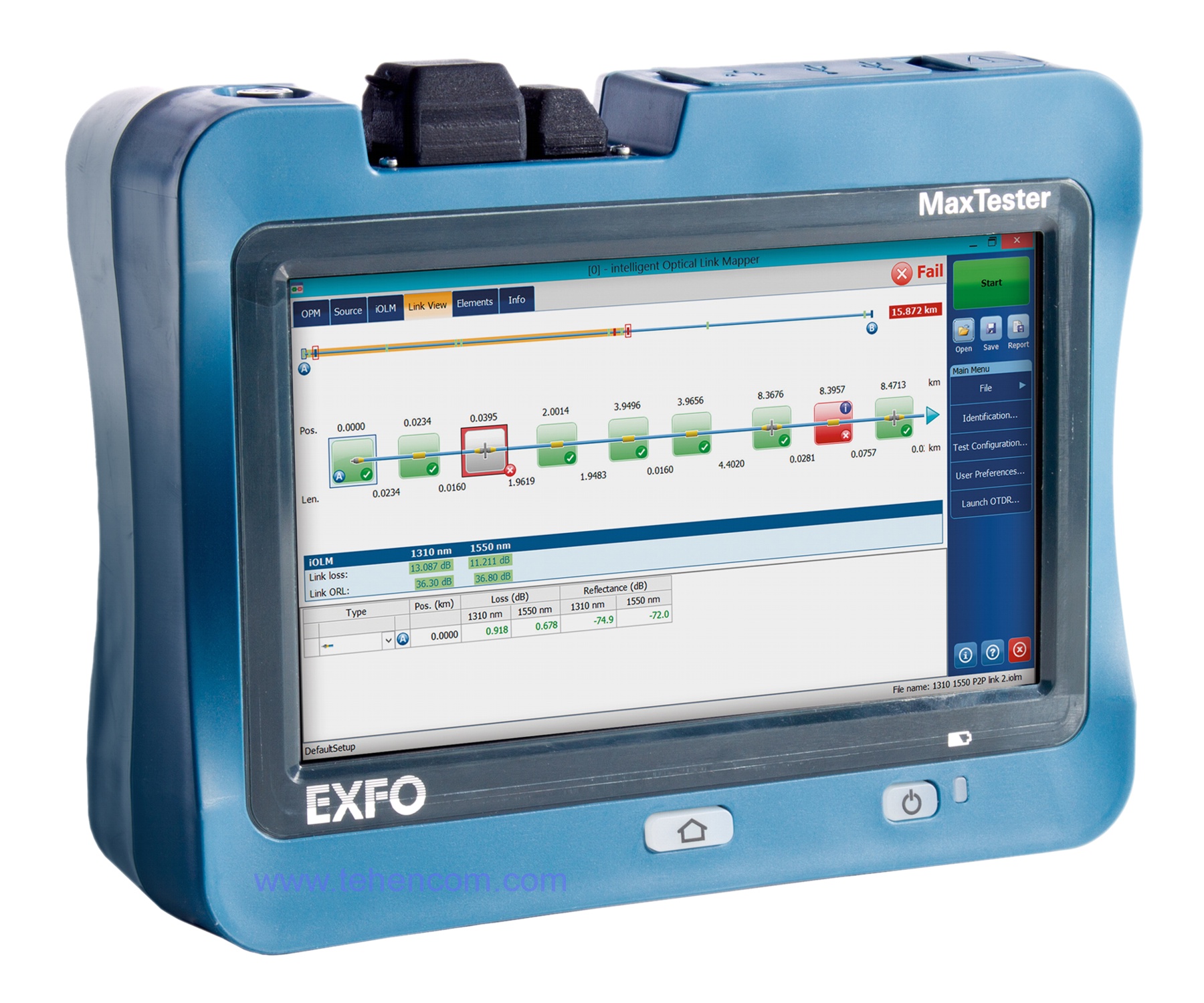 EXFO MAX-735D-SM1
EXFO MAX-735D-SM1Optical time domain reflectometer, 42 dB, 1310 nm, 1550 nm
From 393 342 UAH
On order
Product code: 2030010
Event dead zone SM: 0.5 m
Distance range SM: 0.1 – 400 km
-
Novelty
 EXFO MAX-735D-SM3
EXFO MAX-735D-SM3Optical time domain reflectometer, 42 dB, 1310 nm, 1550 nm, 1625 nm
From 623 478 UAH
On order
Product code: 2030011
Event dead zone SM: 0.5 m
Distance range SM: 0.1 – 400 km
-
Novelty
 EXFO MAX-735D-SM8
EXFO MAX-735D-SM8Optical time domain reflectometer, 42 dB, 1310 nm, 1550 nm + 42 dB, 1650 nm (live)
From 649 188 UAH
On order
Product code: 2030012
Event dead zone SM: 0.5 m
Distance range SM: 0.1 – 400 km
-
 EXFO FTBx-740C-DWC
EXFO FTBx-740C-DWCOptical time domain reflectometer module for DWDM, 40 dB, 1528 nm – 1568 nm
Price on request
On order
Product code: 2030030
Event dead zone SM: 0.7 m
Distance range SM: 0.1 – 400 km
-
 EXFO FTBx-740C-CW18
EXFO FTBx-740C-CW18Optical time domain reflectometer module for CWDM, 37 dB, 1270 nm – 1610 nm
Price on request
On order
Product code: 2030029
Event dead zone SM: 1.1 m
Distance range SM: 0.1 – 400 km
-
 Anritsu MT9085C-057
Anritsu MT9085C-057Optical time domain reflectometer, 46 dB, 1310 nm, 1550 nm, 1625 nm
Price on request
On order
Product code: 2030027
Event dead zone SM: 0.8 m
Distance range SM: 0.5 – 300 km
-
 Anritsu MT9085B-058
Anritsu MT9085B-058Optical time domain reflectometer, 42 dB, 1310 nm, 1490 nm, 1550 nm, 1625 nm
Price on request
On order
Product code: 2030024
Event dead zone SM: 0.8 m
Distance range SM: 0.5 – 300 km
-
 Anritsu MT9085B-056
Anritsu MT9085B-056Optical time domain reflectometer, 42 dB, 1310 nm, 1490 nm, 1550 nm
Price on request
On order
Product code: 2030022
Event dead zone SM: 0.8 m
Distance range SM: 0.5 – 300 km
-
 Anritsu MT9085B-055
Anritsu MT9085B-055Optical time domain reflectometer, 42 dB, 1310 nm, 1550 nm + 35 dB, 1650 nm (live)
Price on request
On order
Product code: 2030021
Event dead zone SM: 0.8 m
Distance range SM: 0.5 – 300 km
General information
Optical time domain reflectometers (OTDRs) allow for automated measurements of key fiber optic communication line parameters: determining the length of an optical line and the distance to fiber discontinuities (splices, connectors), calculating line attenuation, reflective signal magnitude, and much more.
The principle of operation of an optical reflectometer – how it is designed and how it works
Best models
This table contains the best models of optical time domain reflectometers with the status of Top sales or Expert's choice. Such models have a high price / capability ratio, so they should be paid attention first of all. The table is interactive, any column can be sorted in ascending or descending order.
| Model |
Dynamic range SM
|
Wavelength SM
|
Event dead zone SM
|
Attenuation dead zone SM
|
Distance range SM
|
Weight
|
|---|---|---|---|---|---|---|
|
Promotion
Top sales
|
32 / 30 dB | 1310 nm 1550 nm | 0.9 m | 3.6 m | 0.1 – 200 km | 1.5 kg |
|
Promotion
Top sales
|
36 / 35 dB | 1310 nm 1550 nm | 0.7 m | 2.5 m | 0.1 – 260 km | 1.5 kg |
|
Promotion
Expert's choice
|
39 / 39 / 39 dB | 1310 nm 1550 nm 1650 nm (live) | 0.5 m | 2.2 m | 0.1 – 400 km | 1.5 kg |
|
Novelty
Expert's choice
|
42 / 40 / 39 dB | 1310 nm 1550 nm 1650 nm (live) | 0.5 m | 2.5 m | 0.65 – 200 km | 0.5 kg |
|
Novelty
Top sales
|
35 / 33 dB | 1310 nm 1550 nm | 0.8 m | 3.5 m | 0.65 – 200 km | 0.5 kg |
|
Expert's choice
|
36 / 35 dB | 1310 nm 1550 nm | 0.7 m | 2.5 m | 0.1 – 260 km | 1.5 kg |
Additional equipment
In addition to the main list of optical time domain reflectometers presented above, the following additional series are produced: the inexpensive Grandway FHO3000, the universal Grandway FHO5000, for monitoring active fibers EXFO Nova Fiber RTU-2 and the modular analyzer Anritsu MT1000A. Also used for servicing fiber optic communication lines are: optical loss testers, fiber inspection probes, optical spectrum analyzers, modular test platforms, fiber optic fusion splicers and other telecommunications equipment.
Manufacturers of measuring equipment regularly develop and launch new models of optical time domain reflectometers with expanded capabilities and improved performance. Some time after the start of sales of new models, old models and series are discontinued. A complete list of discontinued optical time domain reflectometers, including proposed replacements, can be found here: discontinued optical time domain reflectometers.
Video reviews
Better to see once than hear a hundred times. This video collection from our YouTube channel is dedicated exclusively to fiber optic testing using OTDRs: new products, interesting models, features of their application, standards and measurement techniques. We constantly update and supplement this collection with new interesting materials on optical reflectometry and related topics. Subscribe to our channel to stay updated: YouTube channel of Tehencom.
Basic theory
Buying an inexpensive and high-quality optical time domain reflectometer is not always easy. When choosing a model, in addition to the standard parameters: wavelengths, dynamic range, event dead zone, attenuation dead zone, it is necessary to take into account additional characteristics and capabilities of the reflectometer: pulse width, sampling points, working with live fiber, possibility and ease of programming, built-in digital interfaces, a set of additional functions, operating temperature range, quality and durability of the device, the reputation of the manufacturer, the professionalism and reliability of the supplier, the availability of a service center, warranty period and much more. In addition, you may need technical advice on the types of reflectometers produced: for short lines, for PON, for longhaul and universal.
Measuring optical fiber parameters is a fairly complex topic. Specialists performing such measurements must understand both the reflectometer itself (its modes and settings) and the theory of signal transmission over fiber optics, be able to distinguish good from bad reflectogram events, and know how to correct defective sections of the optical line.
The next section Documentation contains useful information on the theory and practice of using optical time domain reflectometers, which will help you understand this issue and improve your professional level. For complex and unclear issues, write to us by e-mail or call, we will be happy to advise.
Documentation and useful materials
Need help choosing equipment?
To simplify the process of choosing the optimal set of equipment, you can use our experience and recommendations. We have more than 20 years of practical supply experience and we can immediately answer many questions about models, options, terms, prices and discounts. This will save your time and money. To do this, just contact us or order a free consultation and we will be happy to answer your questions.

